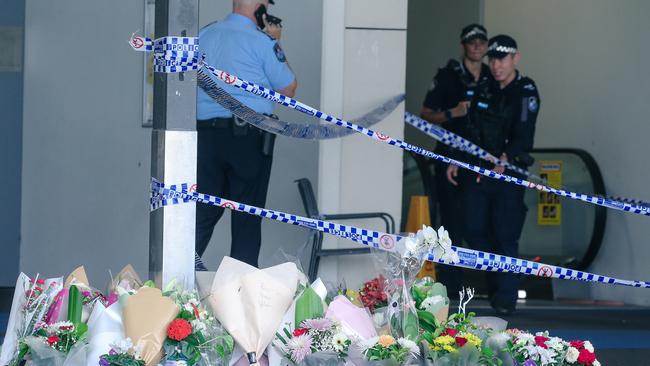Qld crime crisis: Overflowing watch houses point to sad reality
Amid a weekend of crime chaos, a small detail emerged that exposes the true nature of the problem gripping Queensland.
Police & Courts
Don't miss out on the headlines from Police & Courts. Followed categories will be added to My News.
Sometimes it’s the small details that really tell the story.
The weekend just gone was one when the crime crisis in the Gold Coast, and southeast Queensland in general, seemed to explode back into life.
The stories were legion.
Vyleen White, 70, stabbed to death at a Redbank Plains shopping centre as a group of youths allegedly stole her humble Hyundai Getz. A 16-year-old boy has since been charged with her murder.
The gang of youths who, armed with knives, broke into a Helensvale home and stole cars while a young family slept inside. Police said at least some of the group was well known to them for similar previous offending.
The Currumbin Waters man who, after having his own car stolen on Australia Day, on Monday woke to find the rental car he had temporarily replaced it with, presumably with the aid of his insurance company, had also been stolen.

Amid all this chaos, all the terrible stories, one little detail stood out. It was reported that two of five young people arrested in relation to the Redbank Plains incident might need to be brought to the watch-house at Southport here on the Gold Coast.
Why? Supposedly because the watch houses in Ipswich and Brisbane were full.
It was a small detail, but so devastatingly revealing.
It told us two things: That the police are doing their job, catching alleged offenders and bringing them to justice.
But also, that the crime crisis engulfing Queensland is so severe that in doing so, police are filling watch houses with alleged offenders like never before.
The problem was previously reported in October, when 40 prisoners were flown from overcrowded watch houses in north Queensland to watch houses in the southeast, including the Gold Coast.
At the time, the watch house in Cairns was said to be at 125 per cent capacity, Townsville at 178 per cent and Mount Isa at a staggering 219 per cent.

In part the issue has been caused by new laws making it less likely that young offenders will be granted bail.
But it’s also telling evidence – as also revealed in official police statistics – that the state’s crime crisis continues to spiral.
And it’s a difficult situation for police.
“The new laws in Queensland are working and we as police are locking more people up than ever before and the courts are denying bail,” Police Union President Ian Leavers said in October.
“However when that occurs, these prisoners need to be immediately moved to actual prisons and not left to languish in overcrowded watch houses that then creates a risk for police and all those who work in watch houses.”

Overcrowded watch houses also cause other serious issues, as outlined in testimony late last year to a parliamentary inquiry into the state’s youth crime crisis.
National Children’s Commissioner Anne Hollands told the inquiry conditions in watch houses were “much worse” than in prisons. She described being “truly horrified” by the conditions, including children being held for days or weeks in cells with no windows, natural light, or opportunities for fresh air.
In time the overcrowding problem may be partly solved by the opening of a giant new men’s prison near Gatton, which is currently under construction, and a youth remand facility being built at Wacol.
New youth detention centres are also planned for Woodford and Cairns.
In the meantime, as we saw at the weekend, innocent citizens continue to be victims of senseless crimes, and police are flat out bringing the alleged perpetrators to justice.
It appears a cycle with no end.
Mayor Tom Tate has suggested repeat juvenile offenders should be forced to do spells of Army service.
Such ideas have been ridiculed in the past, but it’s not dissimilar to the boot camps introduced by the one-term Newman government before being scrapped by Labor when they returned to power.
And it’s very notable that while not as extreme as Army service, the only programs shown to work to help combat youth crime share many characteristics with boot camps.
The extraordinary success of the ESuarve program in Ormeau is a prime example.
That’s another little detail that’s not often commented on.




